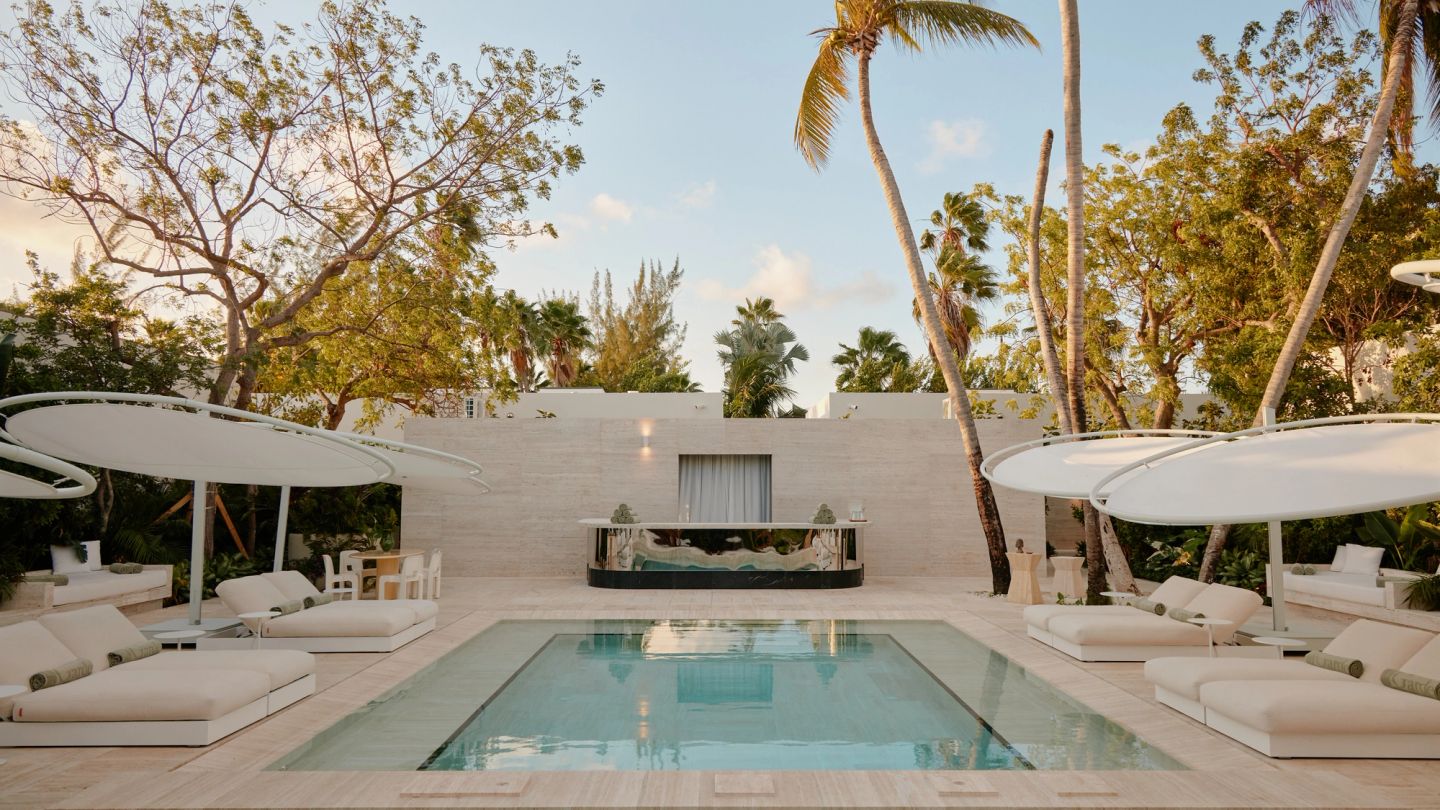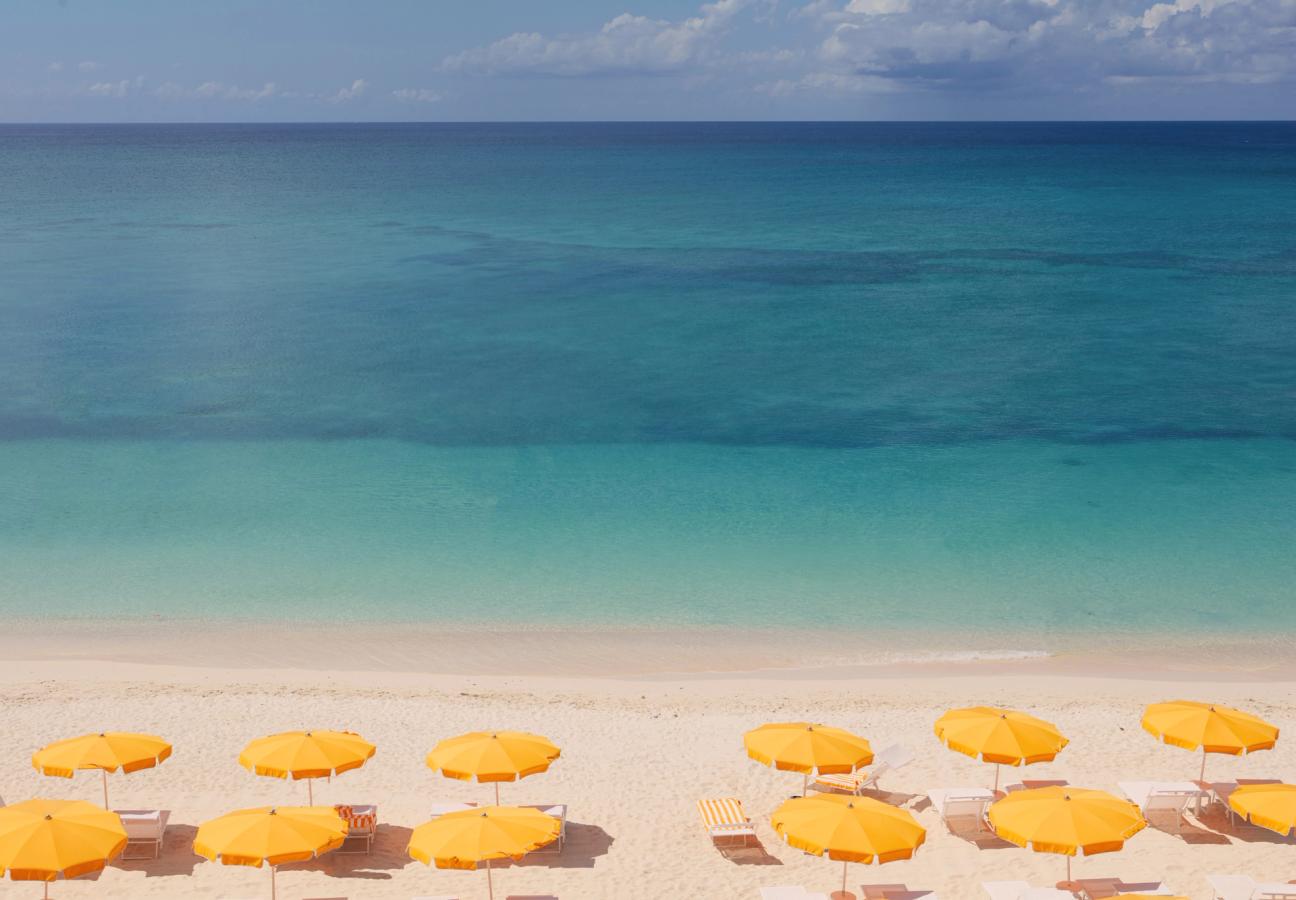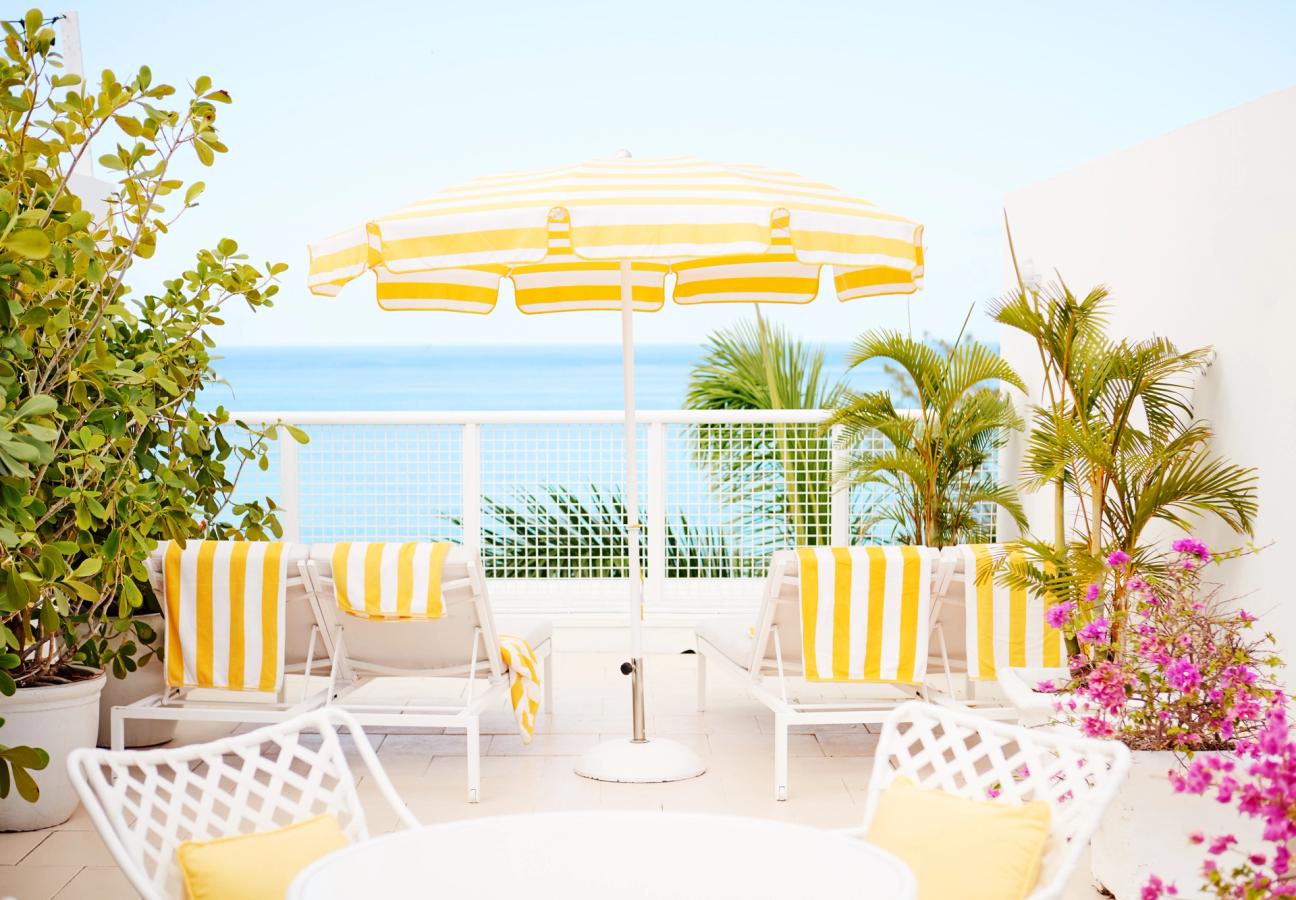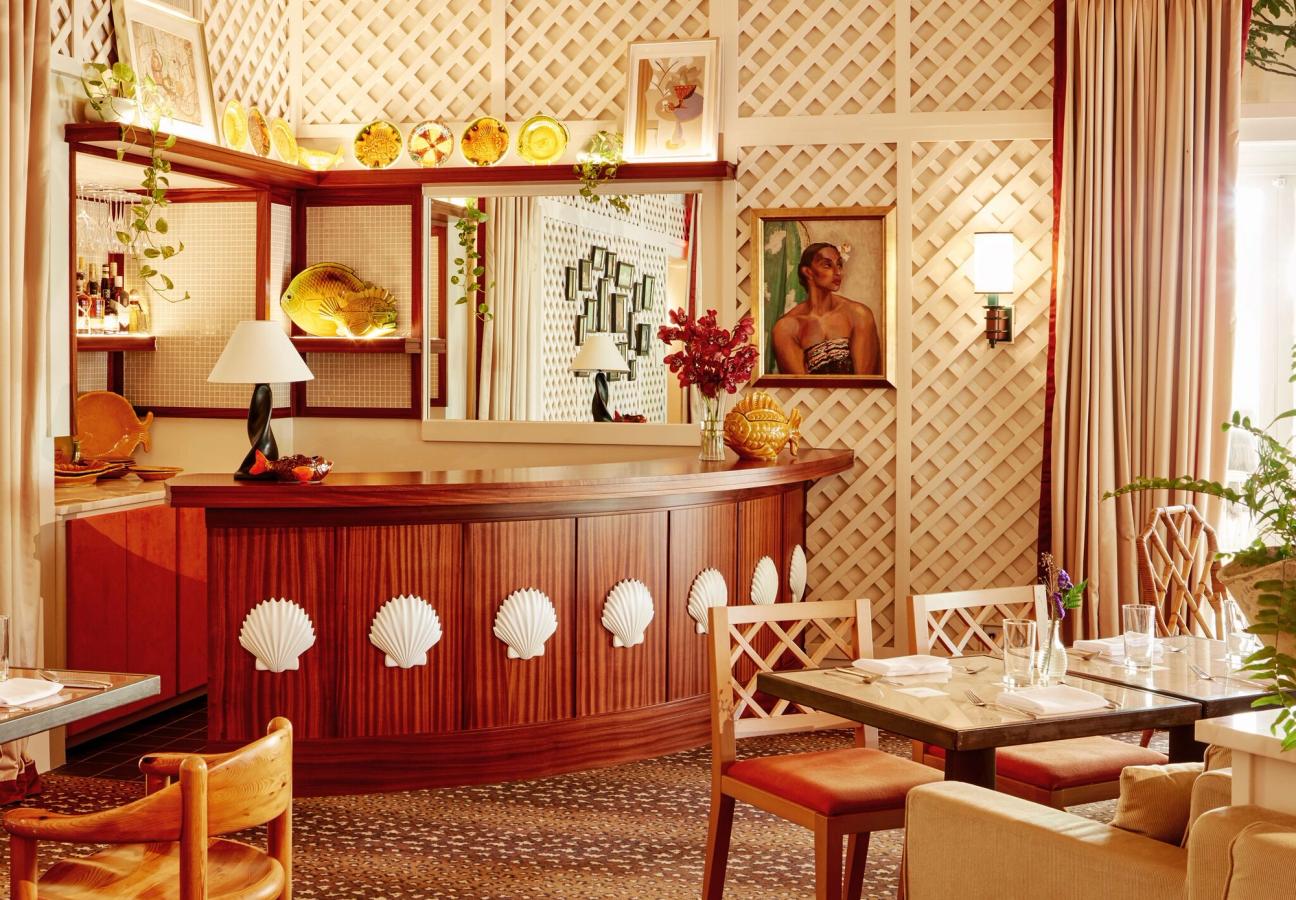

Words: Joseph Bullmore
My uncle Theo only wears suncream on the very tops of his ears, he says. It’s the only place he still burns. He is battle-hardened by decades of life out here, and there’s an impressive mahogany ‘V’ across his chest from where his Lacoste polo shirt has been open for 30 years, exposed to the gorgeous elements out on the deck of the boat. They use the boat to commute, essentially — only the kind of commute that you do if you’re retired on the Cayman Islands, which is, they joke, not all that different to not being retired on the Cayman Islands.
Everyone here tends to have a handsome little craft on which to pootle across the sound from home to town, from town to the golf course, and from the course, as the afternoon turns to evening, to various glowing bars and restaurants, each shaded by palm trees and sprawled out at sporadic points along a thin spit, edged on one side by a place called Seven Mile Beach. The restaurants serve seafood caught almost within the hour: sushi, sashimi and ceviche; but also good grilled snapper and various things made with conch (pronounced ‘conk’), which is a bit like a large mussel, apparently, but just makes me think of Lord of the Flies. A bunch of English public schoolboys. stuck on a remote, beautiful, once-inhospitable island, and making up their own rules and fun accordingly.
"Palm Heights has landed fully formed, utterly confident"
I read once, when I was researching a failed book proposal on tax havens, that when people first arrived on Cayman and tried to live here, the swarms of mosquitoes were so dense that the cows suffocated and choked on clouds of the things. So no-one really bothered to stick around for long until about 1960s, apparently, when this small group of islands suddenly, and almost inadvertently, became a sort of Schrodinger’s Cat of global finance — both part of Britain as a British Overseas Territory, but at the exact same time not at all. This newly-minted parallel universe meant that Cayman could do what it wanted — so long as what it wanted to do, it turns out, was be very efficient and clever with tax and have a jolly good time in the process.
When the lawyers and finance people came over here, they decided to get rid of all the mosquitoes as best they could, my Uncle Theo told us, and at one point they sprayed everything with DDT before they realised that was a bad idea, and later on they dug a big, long trench and put things in it to attract all the mosquitoes, and then they had a special plane fly along it and carpet bomb it, essentially, with industrial quantities of mosquito spray. “He had a great time, that guy who flew the plane,” Uncle Theo says, and you imagine the pilot as a sort of enthusiastic amateur who said “sure, I’ll give it a go” in a sleepy council meeting one afternoon, and maybe even built the plane himself in his garage, with a special lever to release the mosquito napalm at just the right moment. “It’s not like I’ve got much else on.”

I say all this by way of context (and really, the plane trick seems to have worked — there’s barely a bug in sight.) Because for many years, Cayman was by no means the most obvious holiday spot in the Caribbean. It is set far away from its cosier West Indian counterparts, stuck equidistant from Cuba and Mexico and Jamaica, and known best as a byword for offshore finance and offshore diving (which is some of the best and most fruitful on the planet, by the way. The finance isn’t bad either.) But that has changed in the course of a couple of short years. They say that “one swallow does not a summer make”. But perhaps “one excellent hotel might a reputation change.” It’s not that catchy, but most true things aren’t.
The sand on Seven Mile Beach is not white, like the ones on holiday brochures of motivational classroom posters. It is off-white; oyster-cream; the colour of a fine panna-cotta. This is particularly pleasing on the short stretch of shore that leads up to Palm Heights, by far the most anticipated opening on the island in recent times, and the sceney, handsome resort around which almost all social life here now seems to revolve. You can spot the place from a mile away, as you approach in your sailing yacht or your day dreams, because of its now-famous yellow-and-white parasols — pops of gold among the towering green palm trees of the coastline; a sort of Amalfi-Pirate chic.

Parasols, you’ll have noticed, are having a thing at the moment. They are the perma-moodboard of the 2020s so far. I think Slim Aarons has a lot to do with it, and perhaps Positano, along with the sort of influencers with who have just discovered Slim Aarons and Positano. I want to say to every hotel I review that the only thing they need to worry about, really, is the parasols and how they photograph. Get that right, and people will say whatever you like about the food and the rooms and the views. I will be the great Parasol Consultant — a one trick McKinsey. (They have an office out here, actually.) Give me a succession of neatly arranged parasols in primary colours and I’ll make you rich.
Only Palm Heights doesn’t need the help. The place has landed fully formed, utterly confident, completely present. It’s conjured heritage from scratch. The yellow and white awnings seem etched into the shoreline. If you had told me the hotel had been here since before the bankers, I would believe you. The furniture inside — almost all impeccably sourced from antiques dealers and collectors around the world by founder and creative director Gabriella Khalil — certainly paints that impression: a succession of gorgeous curved woods, rare Danish lamps, sculptural mid-century chairs, modernist coffee tables and bone-white baby grands. The aesthetic starts in the lounges downstairs and emanates upwards to the rooms, which are leavened with a sandier, boaty-er, slouchier feel. Scando-Caribbean? The Swedish Virgin Islands? Who knows, but it works.

There are original rugs and curvy mirrors by Ettore Sostass — who I always remember as the maker of Jean Pigozzi’s famous pool awnings down in Antibes, which he demanded be made in orange rather than blue fabric as everyone looks better, apparently, in a glowing orange light. (Sostass had got the trick from a canny fishmonger.) It’s that sort of place, you see, and here the yellow of the awnings and parasols has a similarly balmy, soft-focus effect on those that lounge underneath — though they rarely need the enhancement. (To namedrop a few regular denizens: Bella Hadid, Chloë Sevigny, and Emily Ratajkowski are all friends of the hotel.)
I’m told that on New Year’s Eve here last year (Palm Heights now hosts the most sought-after party on the island), they played the White Lotus theme on the stroke of midnight. It is a knowing nod to the television show that has made a new generation so intrigued by boutique hotels like this — places where it feels like just about anyone might emerge from behind a fern, and anything might well happen (though presumably nothing too stabby). It’s also indicative of Cayman’s clientele, who parade along the beachfront by Palm Heights most mornings and evenings as if part of some gorgeously tanned pantomime — either linen-clad, Birkenstocks in hand, swoonily relaxed; or power-walking, Air-Podded up, visor down, mid conference call to a Japanese telecommunications-and-moped conglomerate. On the one hand, there are silver-haired, slick-backed Manhattan financiers who would once have trotted to St Barts but now come here instead; on the other: a decidedly arty young Euro crowd, who seem to be models, gallerists, painters, designers, and probably all four at once.
Their backdrop is the white, minimalist frame of the hotel, originally constructed as an outpost of the Hyatt Regency in the 1960s, which was all but brought down by the hurricane that wrecked so much of the island in 2004. It has been cunningly revitalised here. What could have been a sad, half-destroyed metal structure on the beach has blossomed instead into a cascade of white balconies, intertwined with green foliage, that make it look as though this was the plan all along.

At nightfall, most of the best parties on Cayman, my friends here tell me, now happen at Tillies. It’s a good name, isn’t it — evocative of Annabel’s and Elaine’s and their 1970s pomp, though the design has the pale, slouchy glow of mid-century California instead of London or Manhattan. The place itself is a restaurant and bar that starts below a canopy of pale linens and sprawls gently out, via ancient palm trees and fiddle leaf figs, onto the beach. From here, sitting in a deckchair with your feet in the warm sand, you can watch an almost inconceivably vast and colourful sunset unfurl and disappear in front of you, while waiters in white double-breasted tuxedos swan by with trays of beer. There are flaming torches out on the sands, while further inside green creepers reach up the latticed, white washed walls to the ceilings, where cane fans gently rotate in the warm air. The food is excellent, and largely centred on the fresh fish that is abundant all around the island. There’s not a nylon golf shirt in sight.
Just next door, in a slightly loungier, more 1980s-feeling section of the hotel beachfront called the Coconut Club, Yashinoki does exquisite sushi, made by the hands of Chef Takumi Murasi. To round out the collection, Paradise Pizza, set a bit back from the waters, offers high-end carbs and excellent spritzes in a bubbling, convivial atmosphere.
There are many ways to work up an appetite down here. Palm Heights is a perfect jumping-off point for some of the established pleasures of the islands. About a mile or so off the coast of Grand Cayman, just before the barrier reef, there’s a spot called Stingray City. It’s a rare, shallow sandbar, completely calm and placid, that means you can stand up to your waist in what feels like the middle of the Atlantic Ocean. At some point in the mid twentieth century, the story goes, returning fishermen would anchor their boats here in the still waters and gut and clean their fish. Then they’d chuck the fish guts and heads into the sea, much to the delight of any passing stingray. Soon, the rays learned to associate the sound of the boat propeller and the sight of human ankle with a free lunch, and so now they gather in great, unprecedented numbers, apparating from seemingly nowhere like silent alien spacecraft at the first scent of Piz Buin.
My cousins have been coming since they were four (they used to dive for lost gold Rolexes in the summer holidays) and they hop into the waters with complete insouciance and say things like “oh, just remember to shuffle with your feet — never step” while adjusting their goggles. The rays are docile and well-fed, they say, but their instinct is to skewer your calf with that javelin stinger should you inadvertently step on them as they snooze a few millimetres beneath the sand. (Everyone here has some gleeful story of a fatcat tourist getting Steve Irwined in his Vilebrequins.) I’m sure Stingray City is a very neat metaphor for the Cayman Islands’ modern pomp, actually — a spot hidden in the middle of nowhere, improbably beautiful and calm, but thriving just below the surface with clandestine fun — but at the time one is more concerned with nine-foot underwater spaceships to work it out.
The same could be said for Bio-Luminescent Bay, in fact — a little lagoon where, when the moon is slim and the conditions are just right, the algae-rich waters glow in electric blues and greens. I took a tipsy kayak one night into the black, calm waters of the cove, and each sweep of the paddle cast shimmering, hallucinogenic tendrils, like spirals of green lightning, through the deep ink. It’s one of those things, like the Northern Lights or a good long lunch, that can’t really be captured on a phone camera or a magazine. There’s probably a metaphor in that, too.
Palm Heights is certainly a lovely place to come home to. Like its name, the hotel feels as if it could have been beamed from a half-remembered decade, which is probably why the regulars here like it so much. Cayman — which never worried itself with the grand, showy society history of a Mustique, say — is happy to create its own nostalgia in the moment, live and direct. That’s a very clever trick, but this place is good at those. Down at Palm Heights, the Good Old Days are happening right now.
Read next: Our most stylish friends tell us where they’re off to this summer


